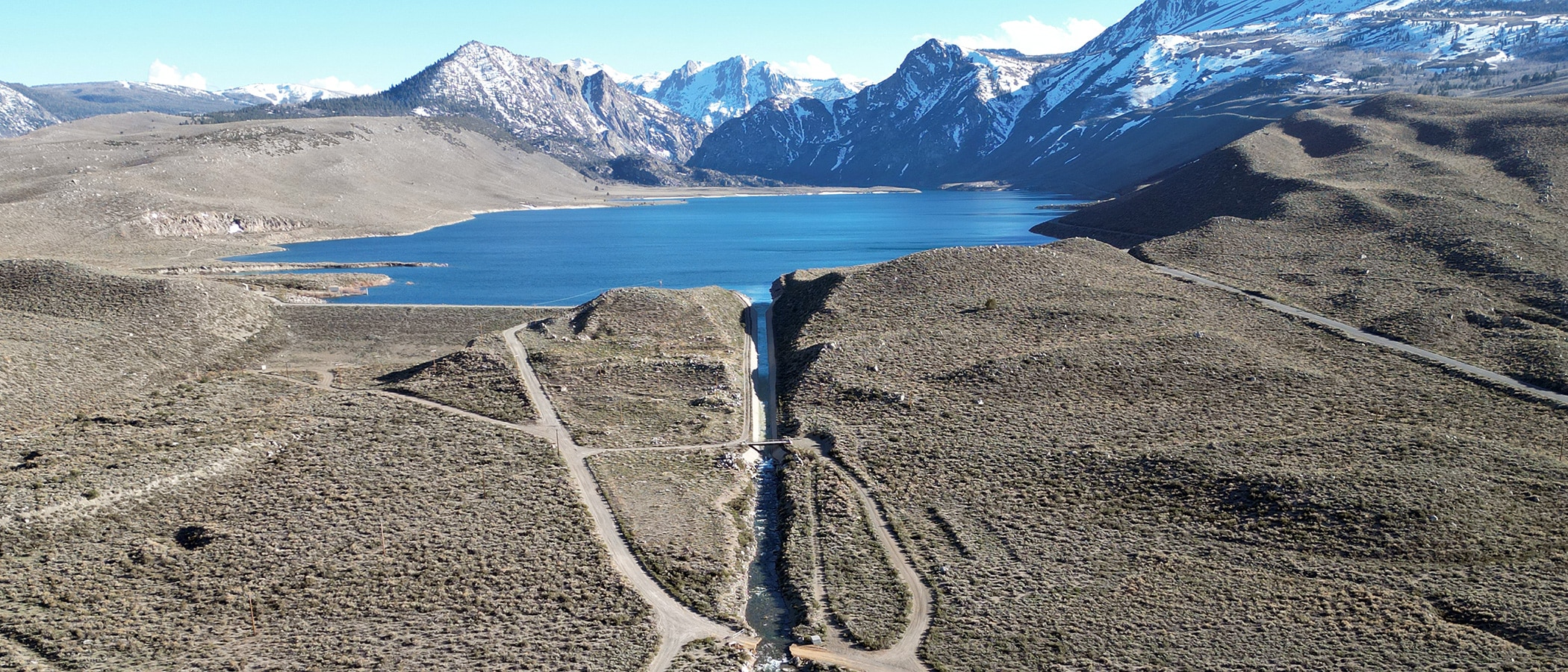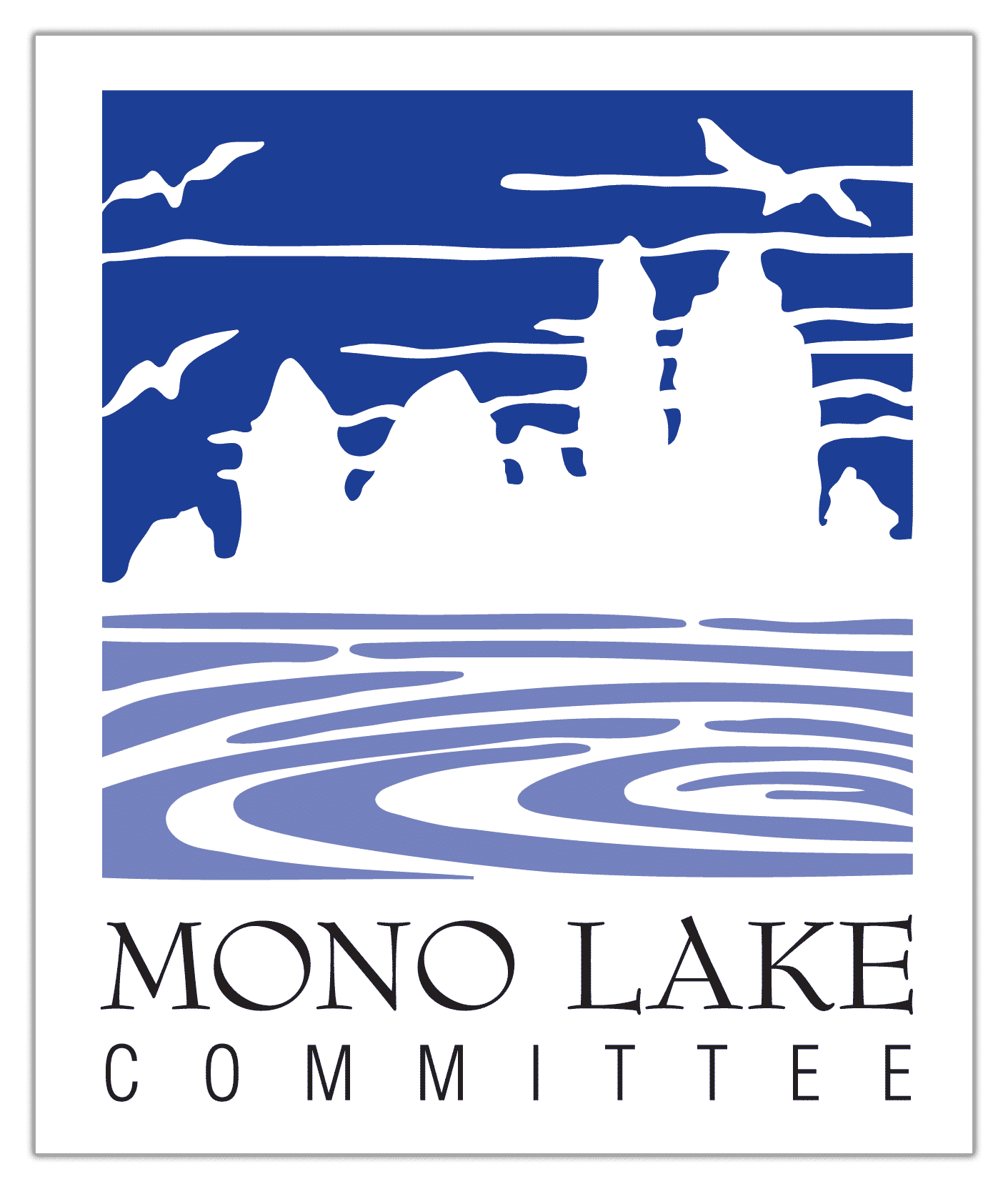
Mono Lake Committee proposes reasonable mitigations to achieve required Rush Creek flows
Since 1941, the Los Angeles Department of Water & Power (DWP) has used Grant Lake Reservoir to collect, store, and divert fresh water from Mono Basin streams to the City of Los Angeles. The reservoir is located on Rush Creek, the largest tributary to Mono Lake.
For decades, DWP dried up Rush Creek to maximize water exports, imposing a great cost on the downstream fishery, miles of riparian habitat, and Mono Lake. Thanks to subsequent decades of successful litigation and California State Water Resources Control Board action, DWP is now required to deliver water to Rush Creek below Grant—and restore the damage done—as a condition of diverting water in the Mono Basin.
And yet, in 2025, for the second year in a row, DWP proposed waiving important springtime restoration flows to accommodate difficulties with its malfunctioning 89-year-old aqueduct intake valve. The Mono Lake Committee argued in response that if DWP manages its own reservoir properly there would be no need to impair the restoration of Rush Creek.
The need for restoration flows and the ability to deliver them
The required flows for Rush Creek below Grant Lake Reservoir are specific. Defined in DWP’s licenses as Stream Ecosystem Flows (SEFs), SEFs set the timing, magnitude, and duration of flow releases for the four creeks that have been historically damaged by DWP’s stream diversions. SEFs were developed from 15 years of extensive scientific stream studies; they seek to match natural runoff patterns to maximize stream restoration and stream health.
But for as long as SEFs have been a requirement in DWP’s stream diversion licenses, infrastructure constraints at Grant Lake Reservoir have impaired DWP’s ability to fulfill the flow requirements for Rush Creek. That’s why in 2021 the State Water Board required DWP to construct a new—and now overdue—outlet to ensure reliable flow release.
How to work around failing infrastructure
In 2023, a new infrastructure failure at Grant Lake Reservoir—a broken aqueduct intake known as the rotovalve—further impaired DWP’s ability to fulfill restoration objectives for Rush Creek as required by its licenses. The failure could have been prevented; regulators had indicated the rotovalve was at the end of its service life and a replacement valve was purchased by DWP back in 2018 but never installed (see Winter & Spring 2024 Mono Lake Newsletter).
Now, the broken rotovalve means that DWP cannot release more than 175 cubic feet per second (cfs) of water from Grant into Rush Creek, a far cry from the 200–750 cfs peak flows required by the Rush Creek SEFs, which scale with the year-type to mimic natural hydrology. In 2024, despite DWP’s limited 175 cfs release capacity, Rush Creek flows exceeded the minimum 380 cfs prescribed peak flow for the year for one reason: the reservoir spilled. Specifically, a peak flow exceeding 500 cfs flowed down Rush Creek because the reservoir started the 2024 runoff year nearly full. This allowed upstream flows to spill over the dam’s spillway and into Rush Creek during the period when runoff naturally swells for the season.
Noting this positive outcome under challenging and unaddressed infrastructure constraints, the question is—can Grant be managed for beneficial spill in future years?
DWP’s water export worsens the situation
Back in May 2024, DWP’s annual Mono Basin operations plan indicated that it planned to divert 4,500 acre-feet of water from Mono Basin streams. This was a voluntary reduction from DWP’s allowed diversion amount and was the result of the Mono Lake Committee and coalition of California-based groups requesting that LA Mayor Karen Bass not increase diversions.
Had DWP stuck to the operations plan, Grant Lake Reservoir would have almost certainly spilled this year. However, DWP unilaterally decided to export nearly three times what was planned, breaking that voluntary export commitment. The increased diversion means less water for Mono Lake. It also lowered Grant, significantly reducing the possibility of a beneficial spill in 2025. Without a spill, DWP can’t fulfill peak flow SEFs on Rush Creek.
Short-term planning like this—diverting water without consideration for cumulative impacts down the road—feels like a return to DWP’s historic practice of maximizing water exports at great cost to the downstream ecosystem.
Two contrasting solutions
2025 is not the first time Rush Creek restoration will rely on Grant spilling, and it won’t be the last. In fact, DWP has proposed a ten-year plan for infrastructure repair that will impair streamflows until at least 2030—if there are no delays.
DWP’s solution? In April DWP requested an annual variance from the State Water Board to waive springtime SEF peak flow requirements and delay Rush Creek restoration. The variance request is called a Temporary Urgency Change Petition (TUCP), but DWP’s repair timeline suggests it will be unable to deliver SEF peak flows to Rush Creek until at least 2030, that is, without reservoir spill. Requesting a TUCP every year for the next five or more years is not what the temporary in TUCP was intended for. As Mono Lake Committee attorneys have pointed out in a letter to the State Water Board, “the TUCP process is designed to address urgent, one-off situations that cannot be avoided through the exercise of due diligence.”
In contrast, the Committee’s solution is to simply do what worked in 2024. Starting runoff seasons with a reasonably full Grant Lake Reservoir while the rotovalve remains broken is prudent, and doable with good planning. High reservoir levels will generate beneficial spills, which is currently one of the only feasible mechanisms—and easiest—for achieving SEFs in Rush Creek. For this reason, in mid-April 2025 the Committee submitted to the State Water Board a proposal for a multi-year TUCP mitigation that requires DWP to manage Grant higher during the time that infrastructure constraints threaten to slow Rush Creek restoration. The Committee’s analysis demonstrates that DWP would always improve peak flows and sometimes achieve peak SEFs on Rush Creek with a little thoughtful planning and foresight.
While DWP continues to delay critical infrastructure repairs and shirk downstream restoration obligations to Rush Creek and Mono Lake, the Committee will continue to coordinate with resource managers, restoration scientists, and regulators to illuminate feasible, effective strategies for protecting and restoring Rush Creek—and Mono Lake too.
More:
- Another delay for Rush Creek restoration – July 2024
- Committee advances a solution to mitigate DWP’s infrastructure problems – April 15 2025
This post was also published as an article in the Summer 2025 Mono Lake Newsletter. Top photo by Geoff McQuilkin.
